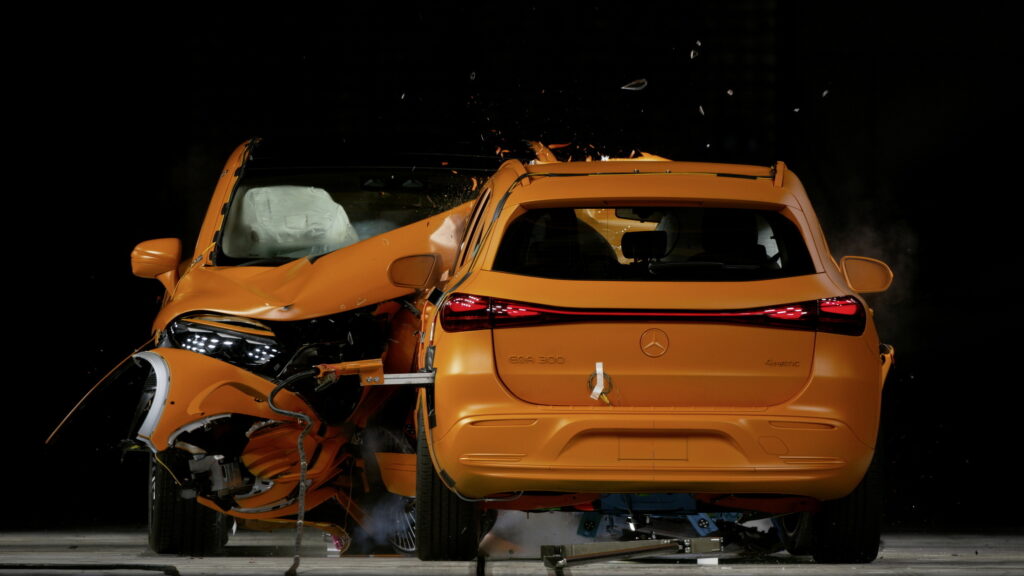Mercedes has become the first automaker to conduct a public EV on EV frontal crash test to see what would happen if they collided with each other
2 hours ago
 –>
–> 
–>
When the European New Car Assessment Program (NCAP) crash tests vehicles, it runs them into a static block at a speed of 50 km/h (31 mph). Mercedes wanted to prove that its new EQ vehicles are extremely safe, so it became the first automaker to conduct a public front overlap crash test between two EVs.
In the most destructive joust imaginable, it launched an EQA and an EQS SUV at each other at a speed of 56 km/h (35 mph), meaning that the vehicles’ relative speed is 112 km/h (70 mph). They then crash into each other with a 50 percent overlap.
Mercedes says it chose this specific set up because it reflects a type of accident that can happen on country roads, especially when one vehicle is trying to accomplish an overtake. The speed was chosen to reflect the assumption that both vehicles would probably be applying the brakes in the lead up to the collision.
advertisement scroll to continue
Read: Minivans Are Big On Space, But Not Safety, IIHS Finds
Predictably, the results are destructive. However, Mercedes’ safety engineers say that this apparent destruction is deliberate. The fact that the front of the vehicles crumpled is intended to protect both the passengers and the battery packs.
Indeed, Mercedes says that the dummies used in this crash test — four of which were meant to simulate female occupants and one of which was intended to simulate a male passenger — all showed low risk of serious injuries.
Meanwhile, Mercedes’ EV safety systems worked, too. While the crash structure prevented serious damage to the cells, its multi-stage high-voltage protection concept prevented damage in the rest of the system.
To achieve this kind of safety, Mercedes employs a variety of strategies. These include separating the positive and negative wiring, and using a self-monitoring high-voltage system that automatically shuts off when it detects a serious collision to ensure that the vehicle is safe before, during, and after an accident.
Now, Mercedes is using the crash test as part of a new advertising campaign to prove to consumers that its EVs are even safer than third-party safety organizations test for.
“Safety is part of Mercedes-Benz’s DNA and one of our core commitments to all road users,” said Markus Schäfer, Mercedes’ chief technology officer. “And to us, protecting human lives is not a question of drive system. The recent crash test involving two fully electric vehicles demonstrates this. It proves that all our vehicles have an equally high level of safety, no matter what technology drives them.”
[embedded content]